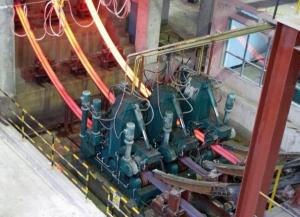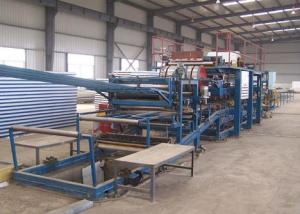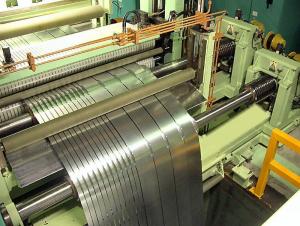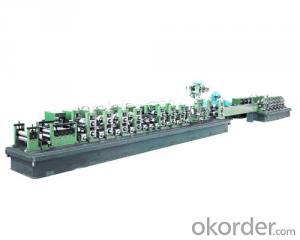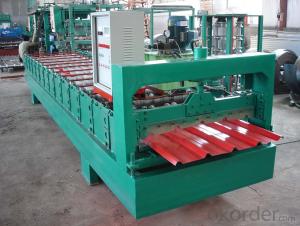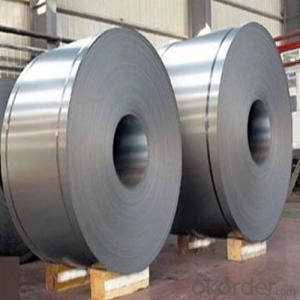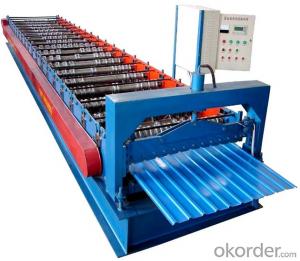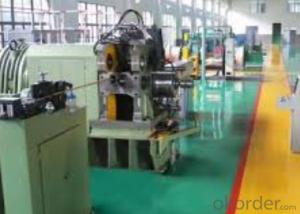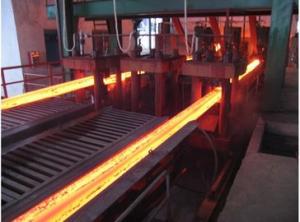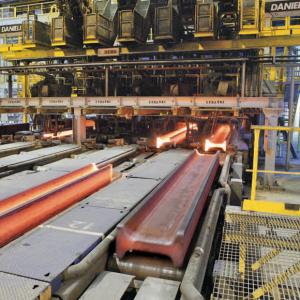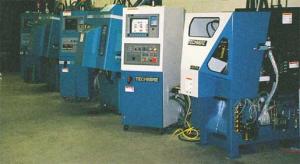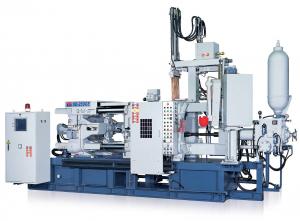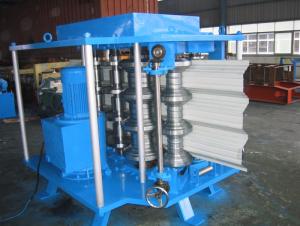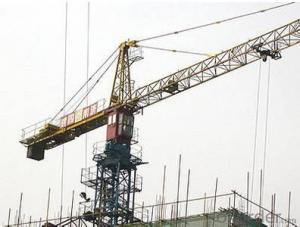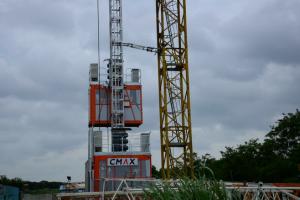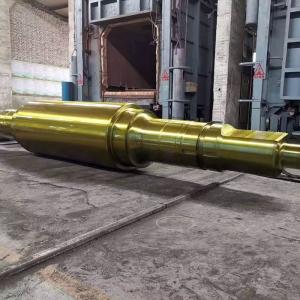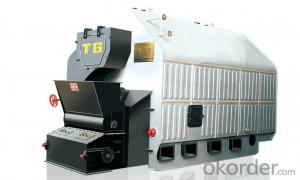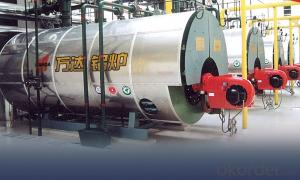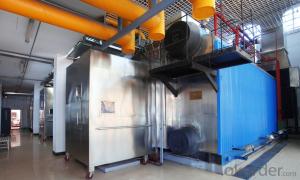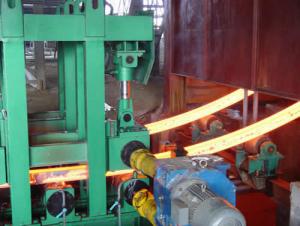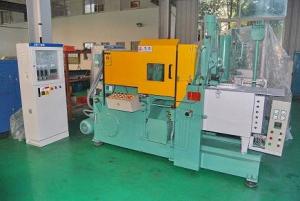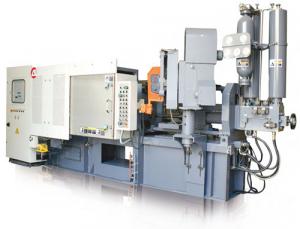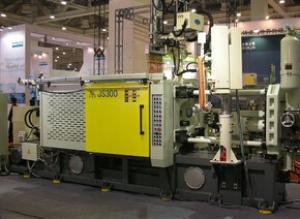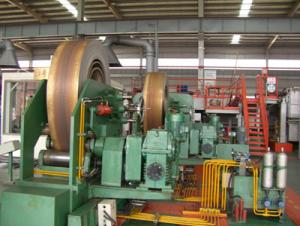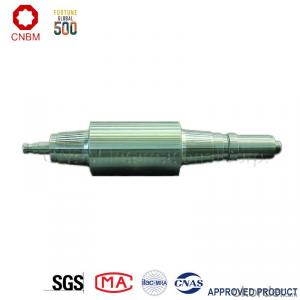Continuous Casting Machine for Steel Billet
- Loading Port:
- China Main Port
- Payment Terms:
- TT or LC
- Min Order Qty:
- 1 Set set
- Supply Capability:
- 30 Sets Per Year set/month
OKorder Service Pledge
Quality Product, Order Online Tracking, Timely Delivery
OKorder Financial Service
Credit Rating, Credit Services, Credit Purchasing
You Might Also Like
Technology process:
1.Heat the EVA film
2.Cover the heated EVA film on the mould(can be made from wood or aluminum)
3.Spray a coating in a certain baume degree
4.Put on the empty blask
5.Sand-up the flask and vibrate to compaction
Packaging & Delivery
Packaging Details:containers
Delivery Detail:Complete one set of equipment needs for three months
- Q:What are the different types of defects that can occur in metal casting machinery?
- There are several types of defects that can occur in metal casting machinery. Some of the common defects include: 1. Shrinkage: This defect occurs when the metal cools and solidifies, causing a reduction in volume. It can result in voids or cavities in the casting. 2. Porosity: Porosity refers to the presence of small voids or gas pockets in the metal casting. It can occur due to the presence of gases in the molten metal or improper gating and venting systems. 3. Inclusions: Inclusions are foreign materials or impurities that get trapped in the casting during the metal pouring process. They can include oxides, slag, or sand particles. 4. Cold shuts: Cold shuts occur when the molten metal fails to fuse properly during the casting process. It results in a visible line or seam on the surface of the casting. 5. Misruns: Misruns happen when the molten metal fails to completely fill the mold cavity, resulting in an incomplete casting. It can occur due to insufficient pouring temperature or inadequate gating and venting systems. 6. Runouts: Runouts occur when the molten metal flows out of the mold cavity before solidification is complete. It can lead to a misshapen or incomplete casting. 7. Sand-related defects: These defects can include sand inclusions, sand wash, or sand burns. They occur when there is inadequate sand compaction, improper mold design, or excessive moisture in the sand. 8. Warping and distortion: Warping and distortion are defects that occur due to uneven cooling or inadequate support during the solidification process. It can result in a distorted or bent casting. 9. Surface roughness: Surface roughness refers to an uneven or rough surface finish on the casting. It can occur due to improper mold preparation, insufficient cooling, or improper gating and venting systems. 10. Dimensional inaccuracies: Dimensional inaccuracies occur when the final casting does not meet the desired specifications or tolerances. It can happen due to shrinkage, thermal expansion, or improper mold design. It is important to identify and rectify these defects to ensure the quality and integrity of metal castings. Regular inspection, proper mold design, and effective process control can help minimize these defects in metal casting machinery.
- Q:How do you stay updated on the latest developments and innovations in metal casting technology?
- To stay updated on the latest developments and innovations in metal casting technology, there are several effective strategies that one can employ. First and foremost, it is crucial to actively engage with industry publications and journals that focus on metal casting. Subscribing to these publications and regularly reading articles and research papers can provide valuable insights into the latest advancements in the field. Some well-known publications in the industry include the International Journal of Metalcasting, Metal Casting Design & Purchasing, and Foundry Trade Journal. Attending relevant conferences, trade shows, and exhibitions is another effective way to stay updated on the latest developments in metal casting technology. These events often feature keynote speeches, technical sessions, and exhibitions where industry experts and companies showcase their innovations. In addition to gaining knowledge from presentations and discussions, attending these events also provides an opportunity to network with professionals and learn from their experiences. Joining professional organizations and associations related to metal casting can also be highly beneficial. These organizations often organize workshops, seminars, and webinars that focus on the latest advancements in the field. Engaging with fellow professionals through these platforms allows for knowledge sharing and staying updated on the current trends and developments. Utilizing online resources such as industry-specific websites, blogs, and forums is another effective way to stay updated. Many companies and experts in the field maintain websites or blogs where they regularly share insights, case studies, and news related to metal casting technology. Participating in online forums and discussion boards dedicated to metal casting can also provide a platform for exchanging ideas, discussing advancements, and learning from others in the industry. Lastly, building a network of contacts within the metal casting industry is crucial for staying updated. Regularly attending industry events, engaging in discussions with professionals, and actively participating in online communities can help establish and nurture these connections. By fostering relationships with experts and peers, one can gain access to insider knowledge, industry updates, and the latest innovations in metal casting technology. In summary, staying updated on the latest developments and innovations in metal casting technology requires a proactive approach. Engaging with industry publications, attending conferences and exhibitions, joining professional organizations, utilizing online resources, and building a network of contacts are all effective strategies to ensure one remains informed and up-to-date in this ever-evolving field.
- Q:What are the common surface finishes achieved with metal casting machinery?
- The common surface finishes achieved with metal casting machinery include smooth, glossy finishes, textured or patterned finishes, and matte or rough finishes.
- Q:What are the maintenance costs associated with metal casting machinery?
- There are several factors that can cause the maintenance costs of metal casting machinery to vary. Firstly, it is essential to perform regular maintenance tasks to ensure optimal performance. These tasks include lubricating moving parts, replacing worn-out components, and cleaning the machinery. By carrying out these routine maintenance activities, breakdowns can be prevented, the risk of accidents can be reduced, and the lifespan of the machinery can be extended. The costs associated with these tasks typically include the purchase of lubricants, replacement parts, and cleaning supplies. In addition, there may be occasions where major repairs or overhauls are necessary for the metal casting machinery. These repairs can be more costly and may require the hiring of specialized technicians or the purchase of specific tools and equipment. The costs for major repairs can vary significantly depending on the complexity of the machinery and the extent of the damage. Moreover, it is often necessary to regularly calibrate and make adjustments to metal casting machinery in order to maintain accuracy and precision. This may involve hiring skilled technicians or using specialized measuring instruments and tools. The costs associated with calibration and adjustment can vary depending on the frequency required and the complexity of the machinery. Another factor to consider is the cost of downtime during maintenance activities. When metal casting machinery is being maintained, it is not operational, resulting in a loss of production. This can have an impact on the overall productivity and profitability of the casting process. Therefore, it is important to take into account the potential revenue loss when calculating the maintenance costs. Lastly, the cost of training and education for operators and maintenance personnel should be considered. Providing training on proper machine operation, maintenance procedures, and safety protocols can help minimize the risk of accidents and reduce the likelihood of costly mistakes or equipment damage. In conclusion, the maintenance costs associated with metal casting machinery include routine maintenance tasks, major repairs, calibration and adjustments, potential revenue loss due to downtime, and training expenses. These costs can vary depending on the complexity of the machinery, the frequency of maintenance required, and the level of expertise needed for repairs and calibration.
- Q:How are the cores placed in the mold cavity in metal casting machinery?
- The placement of cores in the mold cavity varies depending on the complexity of the casting design and the core material being used in metal casting machinery. One technique commonly used is known as "core setting." In this process, sand or other mold material is partially added to the mold cavity, and then the core is meticulously positioned within the cavity. The remaining mold material is then added to fully enclose the core. This method is typically employed for simpler castings with uncomplicated core shapes. For more intricate casting designs, a technique called "core assembly" is utilized. The core is constructed in sections or segments, which are then assembled within the mold cavity to form the complete core shape. Various techniques such as pins, clamps, or adhesive materials are used to align and secure the individual core segments. This approach allows for greater flexibility in creating complex and detailed casting designs. In certain cases, particularly with large or heavy cores, mechanical devices like cranes or robotic arms may be employed to accurately position the cores within the mold cavity. This guarantees precision and consistency in core placement, reducing the likelihood of defects or inaccuracies in the final casting. In summary, the careful and precise placement of cores in the mold cavity is crucial in metal casting machinery. The specific method used depends on factors such as the complexity of the casting design, the type of core material, and the capabilities of the casting machinery.
- Q:How does metal casting machinery handle the recycling and reuse of materials?
- Metal casting machinery is designed to efficiently handle the recycling and reuse of materials. Through various processes such as melting, refining, and pouring, the machinery is able to transform scrap metal and other recyclable materials into new castings. This helps to reduce waste and conserve resources, ultimately promoting sustainability in the metal casting industry.
- Q:Can metal casting machinery be used for casting complex geometries?
- Yes, metal casting machinery can be used for casting complex geometries. With advancements in technology and casting techniques, metal casting machinery is now capable of producing intricate and detailed shapes, including complex geometries. Different types of casting processes such as investment casting, sand casting, and lost-wax casting can be employed to achieve complex shapes with high precision and accuracy. Additionally, computer-aided design (CAD) and computer-aided manufacturing (CAM) software can be utilized to model and simulate the casting process, allowing for optimization and customization of the casting machinery to accommodate complex geometries. Overall, metal casting machinery has evolved to offer a wide range of capabilities and flexibility, making it possible to cast complex geometries with ease.
- Q:Can metal casting machinery be used for investment casting of ceramics?
- No, metal casting machinery cannot be used for investment casting of ceramics. Metal casting machinery is specifically designed to melt and pour molten metals into molds to create metal parts. The process involves high temperatures and pressures that are suitable for metals but not for ceramics. Investment casting of ceramics, on the other hand, requires a different set of equipment and techniques. It involves creating a mold around a wax pattern, then removing the wax to leave a cavity. The ceramic slurry is then poured into the cavity and allowed to solidify. After the ceramic part is fully cured, the mold is broken to retrieve the final product. Ceramic investment casting requires specialized machinery that can handle the delicate nature of ceramics, as well as the specific temperature and pressure conditions required for the process. Therefore, it is not feasible to use metal casting machinery for investment casting of ceramics.
- Q:Can metal casting machinery be used for investment casting of plastics?
- No, metal casting machinery cannot be used for investment casting of plastics. Metal casting machinery is designed specifically for melting and casting metals, whereas investment casting of plastics requires different equipment and processes. Investment casting of plastics typically involves melting the plastic material and injecting it into a mold under controlled conditions. The mold is then cooled and the plastic part is removed. This process is different from traditional metal casting, which involves melting and pouring molten metal into a mold. Therefore, specialized machinery and equipment are required for investment casting of plastics.
- Q:How does metal casting machinery handle the removal of burrs from the castings?
- Metal casting machinery handles the removal of burrs from castings through various methods such as grinding, tumbling, or using specialized tools. These techniques help smoothen the surface of the castings, eliminating any rough edges or protrusions caused during the casting process.
Our professions include metallurgical technology, equipment and automation. We can provide the best solutions to the production process, design & manufacture of equipment and electrical automation regarding various industries in domestic and foreign districts with exquisite technology and fine quality service. We can provide all-around services to customers from development & design to the provision, installation and running of products.Strong technical strength, advanced equipment manufacturing technology, fine quality professional talents, and perfect service systems all bring about reliability, relaxation, convenience and delight to the cooperation with customers from beginning to end.
1. Manufacturer Overview |
|
|---|---|
| Location | Jiangsu,China (Mainland) |
| Year Established | 2000 |
| Annual Output Value | |
| Main Markets | South America Eastern Europe Southeast Asia Africa Mid East South Asia Domestic Market |
| Company Certifications | |
2. Manufacturer Certificates |
|
|---|---|
| a) Certification Name | |
| Range | |
| Reference | |
| Validity Period | |
3. Manufacturer Capability |
|
|---|---|
| a)Trade Capacity | |
| Nearest Port | SHANGHAI |
| Export Percentage | 21% - 30% |
| No.of Employees in Trade Department | 3-5 People |
| Language Spoken: | English, Chinese |
| b)Factory Information | |
| Factory Size: | |
| No. of Production Lines | |
| Contract Manufacturing | |
| Product Price Range | |
Send your message to us
Continuous Casting Machine for Steel Billet
- Loading Port:
- China Main Port
- Payment Terms:
- TT or LC
- Min Order Qty:
- 1 Set set
- Supply Capability:
- 30 Sets Per Year set/month
OKorder Service Pledge
Quality Product, Order Online Tracking, Timely Delivery
OKorder Financial Service
Credit Rating, Credit Services, Credit Purchasing
Similar products
New products
Hot products
Hot Searches
Related keywords
